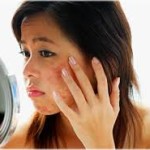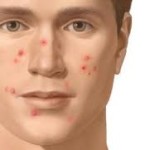 People may also see blackheads on their skin. This is caused when the oil breaks through the skin and is oxidized by the air.
People may also see blackheads on their skin. This is caused when the oil breaks through the skin and is oxidized by the air.
Acne problems are rarely a serious medical condition but they are often a serious emotional and psychological condition. Our faces are how the people around us ‘see’ us. Many people don’t see past skin deep and when the skin is red with pustules and whiteheads the impression isn’t positive. (3,4)
Some risk factors that can increase your risk of developing acne problems are medications like cortisone, exposure to greasy makeup, a family history, friction or pressure from items like cell phones, helmets or tight collars.
Acne problems take several forms. Acne vulgaris can be a mild, moderate or severe form of acne. In acne vulgaris you experience whiteheads, blackheads, pustules, papules, nodules and cysts depending upon the severity of the condition.
Acne Rosacea looks similar to severe acne vulgaris. Doctors can sometimes confuse these two which is a problem since the treatments are significantly different. Acne rosacea usually affects people over 30 and is characterized by a red rash over the cheeks, nose, forehead and chin. In Acne Rosacea you don’t usually suffer from blackheads. The condition is more prevalent in women than men, but when it happens to men it is more severe. (5)
References:
(1) KidsHealth.org: Acne
http://kidshealth.org/kid/health_problems/skin/acne.html
(2) National Institute of Arthritis and Musculoskeletal and Skin Diseases: What is Acne?
http://www.niams.nih.gov/health_info/acne/acne_ff.asp
(3) Journal of Ayub Medical College: Prevelance of Mental Health Problems in Acne Patients
http://www.ncbi.nlm.nih.gov/pubmed/11873431
(4) PsychCentral.com: For Teens, Acne Problems May be More than Skin Deep
(5) U.S. National Library of medicine: Rosacea
http://www.ncbi.nlm.nih.gov/pubmedhealth/PMH0001882/
(6) Proceedings of the Royal Society of Medicine: Acne Conglobata
http://www.ncbi.nlm.nih.gov/pmc/articles/PMC2184445/
| Advertisement | |
|
|
|



Leave a Reply